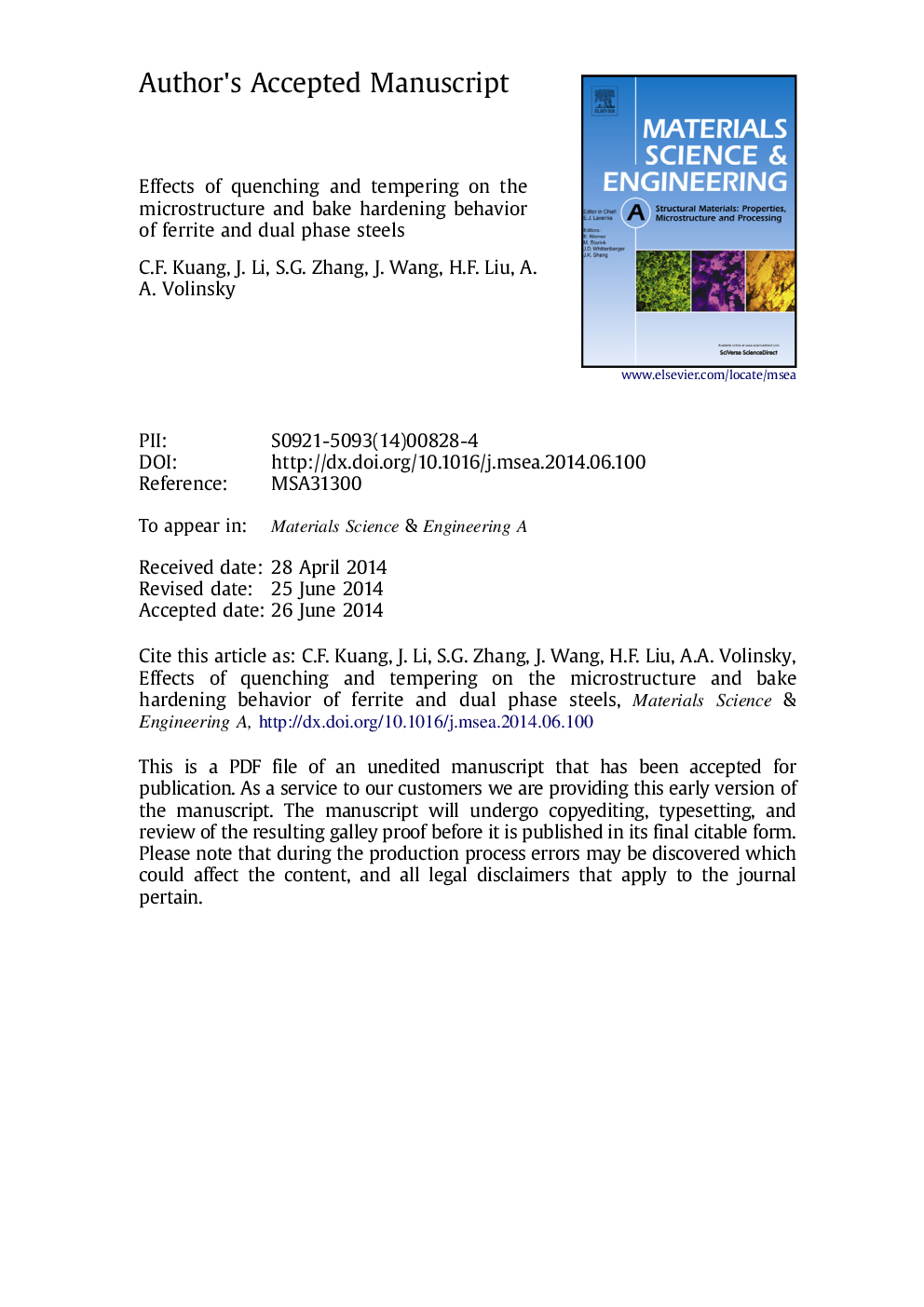| Article ID | Journal | Published Year | Pages | File Type |
|---|---|---|---|---|
| 7980431 | Materials Science and Engineering: A | 2014 | 25 Pages |
Abstract
The effects of quenching and tempering on the microstructure evolution and bake hardening (BH) behavior of both ferrite and dual phase steels were investigated. The C-Mn steels were heated to the soaking temperature, quenched in water and then tempered in the 100-500 °C range. After pre-straining, the baking treatment (180 °C for 20 min) was carried out to measure the BH values. It was found that increased quenching temperature reduced the BH value. Furthermore, the BH value turned to be negative when the quenching temperature exceeded 670 °C and 710 °C for the steels annealed at 800 °C and 900 °C, respectively. The ferrite aging and the martensite tempering played key roles in the bake hardening behavior during the tempering process. In the present study, three stages were identified during tempering of the above steels: (1) the relief of residual stresses in the ferrite; (2) the precipitation of carbides in both ferrite and martensite; (3) the dissolution of carbides in the ferrite. The BH values of both ferrite and dual phase steels had a complex variation with the tempering temperature. After an apparent increment, the BH value reduced, and then was slightly enhanced when the tempering temperature increased from 25 °C to 500 °C.
Related Topics
Physical Sciences and Engineering
Materials Science
Materials Science (General)
Authors
C.F. Kuang, J. Li, S.G. Zhang, J. Wang, H.F. Liu, A.A. Volinsky,
